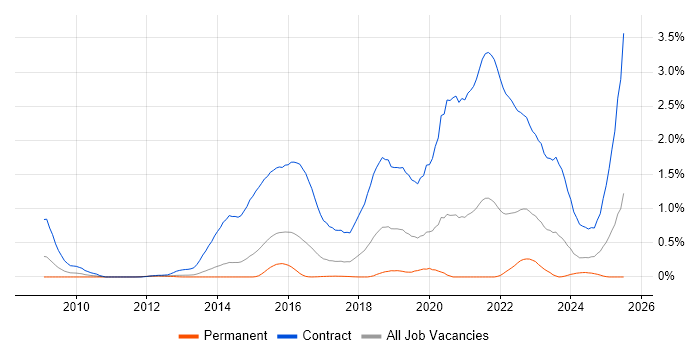Baseline Personnel Security Standard (BPSS) Clearance
West Yorkshire > Leeds
The table below provides summary statistics for permanent job vacancies advertised in Leeds with a requirement for BPSS Clearance qualifications. It includes a benchmarking guide to the salaries offered over the 6 months leading up to 25 December 2025, comparing them to the same period in the previous two years.
| 6 months to 25 Dec 2025 |
Same period 2024 | Same period 2023 | |
|---|---|---|---|
| Rank | 96 | - | - |
| Rank change year-on-year | - | - | - |
| Permanent jobs citing BPSS Clearance | 2 | 0 | 0 |
| As % of all permanent jobs in Leeds | 0.15% | - | - |
| As % of the Qualifications category | 0.58% | - | - |
| Number of salaries quoted | 0 | 0 | 0 |
| Median annual salary (50th Percentile) | - | - | - |
| West Yorkshire median annual salary | - | - | - |
All Academic and Professional Certifications
Leeds
BPSS Clearance falls under the Academic Qualifications and Professional Certifications category. For comparison with the information above, the following table provides summary statistics for all permanent job vacancies requiring academic qualifications or professional certifications in Leeds.
| Permanent vacancies requiring academic qualifications or professional certifications | 347 | 260 | 285 |
| As % of all permanent jobs advertised in Leeds | 25.93% | 23.66% | 22.11% |
| Number of salaries quoted | 194 | 78 | 156 |
| 10th Percentile | - | £25,000 | £30,063 |
| 25th Percentile | £28,250 | £40,013 | £42,968 |
| Median annual salary (50th Percentile) | £40,537 | £50,000 | £57,500 |
| Median % change year-on-year | -18.93% | -13.04% | -1.71% |
| 75th Percentile | £67,500 | £70,500 | £71,250 |
| 90th Percentile | £78,768 | £80,000 | £82,649 |
| West Yorkshire median annual salary | £41,075 | £49,274 | £57,500 |
| % change year-on-year | -16.64% | -14.31% | -0.54% |
BPSS Clearance
Job Vacancy Trend in Leeds
Historical trend showing the proportion of permanent IT job postings citing BPSS Clearance relative to all permanent IT jobs advertised in Leeds.

BPSS Clearance
Salary Trend in Leeds
Salary distribution trend for jobs in Leeds citing BPSS Clearance.

BPSS Clearance
Co-Occurring Skills & Capabilities in Leeds by Category
The following tables expand on the one above by listing co-occurrences grouped by category. They cover the same employment type, locality and period, with up to 20 co-occurrences shown in each category:
